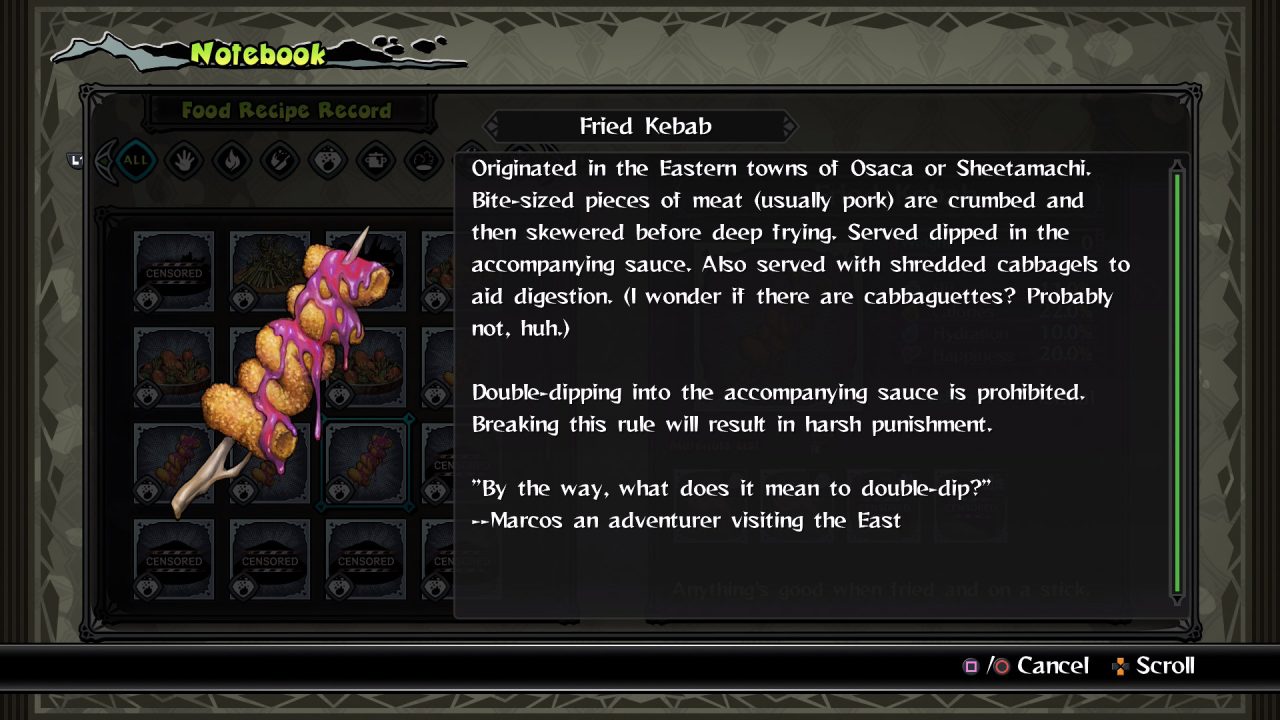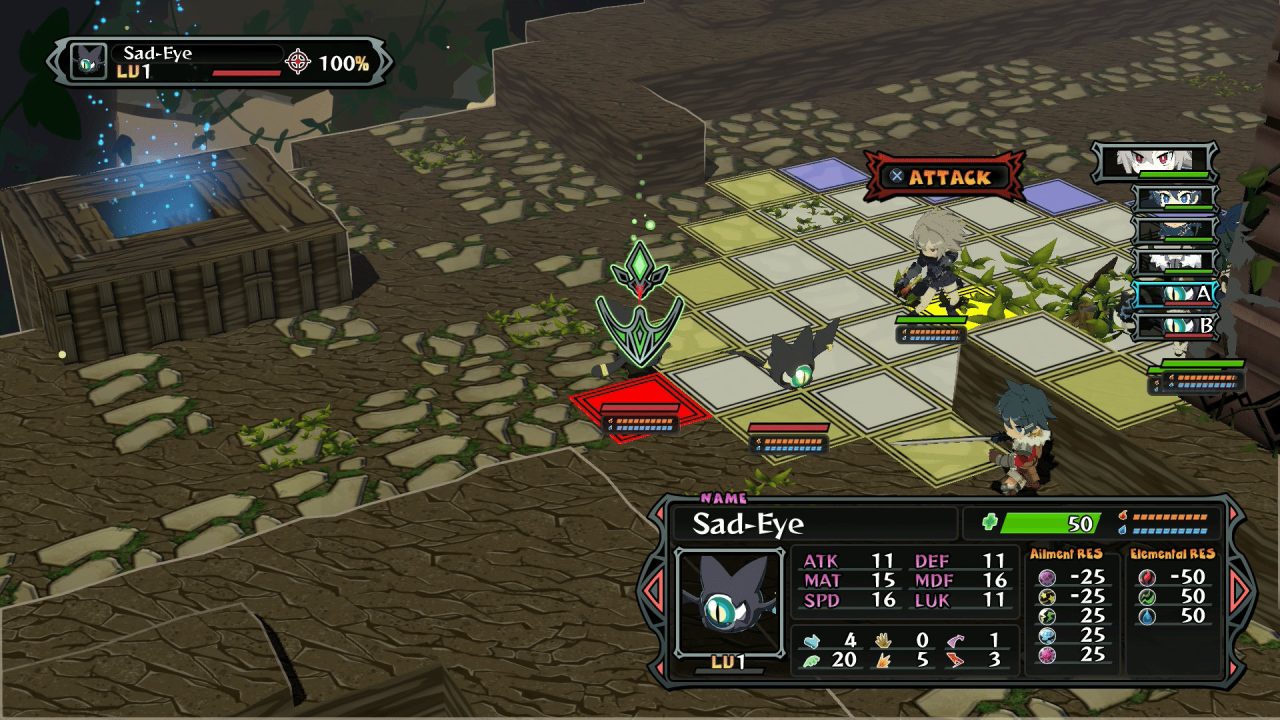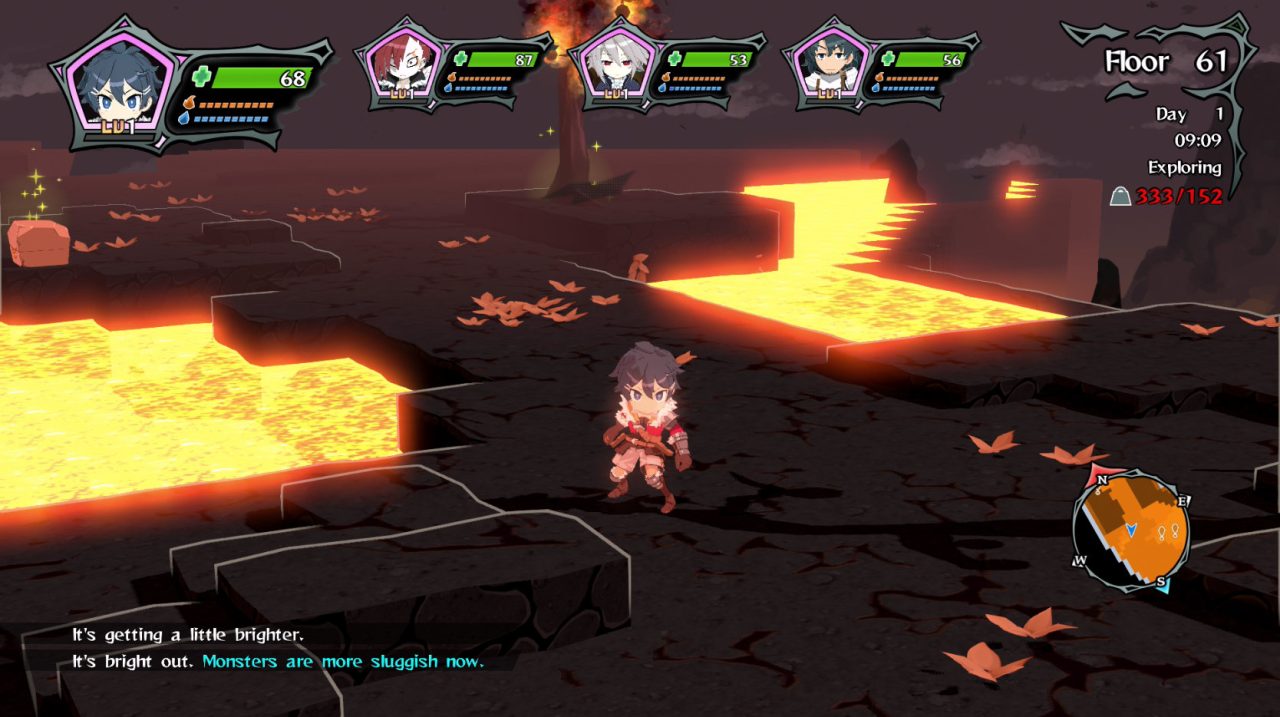Hungry for something different out of your RPGs? Perhaps Monster Menu: The Scavenger’s Cookbook is more your flavor. When you come across monsters in games, if your first thought is, “how do they taste?” a la Snake in Metal Gear Solid 3, this might be your new craving. But is Monster Menu a sweet treat, or does it leave a bitter aftertaste?
Monster Menu is a roguelike dungeon crawler with an emphasis on crafting, specifically cooking. As the title would suggest, monsters are indeed on the menu. An adventurer’s gotta eat and your crew has fallen on hard times, so they’ll eat whatever they can find. Your created novice adventurer is eager to get their first taste of exploration, so you venture into the Sealed Lands, a known dungeon for beginners. Unfortunately, things go amiss: you find yourself clinging to life, starving, and dehydrated with no idea how to get back out. Desperate for anything to eat, you find a dead monster and take a bite. It’s horrid, but you at least learn it’s possible to survive down here. It just so happens that up to three others are in the same predicament as you. There’s strength in numbers, so you may as well band together to find a way out of this mess.
As the title would suggest, Monster Menu features an elaborate cooking subgame. There’s a survival edge to this game, as not only do you need to manage your characters’ hit points, but you also need to keep up their calories, hydration, and happiness. Of course, you need edible materials to cook, so you’ll have to scavenge the dungeons for food. Some of the most nutritious and satisfying meals tend to involve meat; in addition to gaining XP from defeating monsters, you also collect their remains to use as food. You start with a few recipes, but gradually expand your menu as you discover new recipes while scavenging. You are also free to experiment by combining foods or adding ingredients to existing recipes. Mushrooms generally raise the profile of any meal, but rocks tend to ruin any dish. You must keep your characters’ four health meters in mind, as each recipe restores (or depletes) each meter in differing amounts. Happiness is especially important to keep an eye on, as if you feed your characters something they don’t like — such as insects or identifiable parts of monster anatomy like eyeballs — their happiness will take a hit. Your characters’ stats decrease as their health deteriorates, and if they’re empty, the energy comes out of your HP, so you’d better keep them nourished.

But cooking is only part of Monster Menu. Your band of adventurers is trying to find their way out of this dungeon, exploring it floor by floor, always searching for the exit to the next floor. Each floor is a small, procedurally generated level with roaming monsters and scavenging spots where you’ll hopefully find helpful materials. But your characters’ energy is limited, and every action they take consumes calories and hydration. Between each floor, you can make camp to cook meals to feed your characters.
The combat in Monster Menu is a traditional turn-based tactical RPG-style that’s on the simpler side with familiar conventions, like attacks from behind or from above doing more damage. On your turn, you move along a grid and use an action, such as an attack, a special move, or using an item. And that’s all there is to it. Because of the roguelike nature of the game, it’s fine that combat is less complicated, as one of your main goals is simply to survive. As such, combat is only a means to an end, with many other factors to consider in staying alive. It’s up to you to determine how much you need to level your characters up, balancing battles with maintaining your health so you’re strong enough to tackle the next challenge. The overall game is one grand puzzle with a multitude of pieces.
Your characters soon discover that when they die, they wind up back at their camp on the first floor only to start over in a Sisyphusian quest to escape. A roguelike it is! Your characters always start over at level 1. There are checkpoints as you progress, so you aren’t always required to start back on the first floor. Monster Menu smartly takes notes from Hades in that during each run, I would usually discover something new: a piece of equipment, a monster, or an ability. That helped to keep each run feeling fresh, despite the repetition of fighting the same monsters on the same floors each time. Thankfully, when you die, you keep a portion of your inventory, so you never start over from scratch. Even when my party would get wiped out, I could feel my characters’ strength accumulating and see I was getting further with each attempt. So I knew I was making progress even when I was struggling. It’s a good way of challenging players without making them feel beaten down and defeated.

That said, the repetition still wore on me when I would get stuck on a particularly difficult boss and had to tromp through the same group of floors before I could try again. Though the simplified combat has its place within this system, it isn’t meaty enough to keep the grinding interesting. The cooking game eventually became reduced to an appetizer rather than the main course, as beefing up my characters and their equipment took my main focus.
The truth about Monster Menu’s story is that it’s lean. There’s no saving the world here; your characters are solely wrapped up in a struggle just to escape a dungeon. It slowly becomes clear that there’s more to why you’re stuck in your predicament than just a rookie mistake. But although the game raises intriguing questions, most mysteries remain unsolved at the end. Almost all of the narrative is divulged through text with occasional short cutscenes. Drawing from Dark Souls, you can find plenty of cryptic lore regarding gods and the origins of the world in the pages you pick up while scavenging. But little of it spills over into your personal story. Instead, it’s left to you to figure out how the pieces fit together.
On the other hand, the cooking aspect is fascinating. If you think philosophically about the concept of food too much, it can start to seem existentially weird and distressing, consuming the remnants of other living things. Yet eating is, of course, a mandatory aspect of being alive. In Monster Menu, as you collect body parts of monsters as ingredients, you eventually wind up with an array of unappetizing items in your inventory. Your characters will surely lose happiness if they consume many of those items raw. Some of your recipes that use unappetizing ingredients, like bugs, improve the quality of those foods, but they’re only good as a last resort as your characters still won’t like them. But tuck those bugs into meat buns, and you might have a new favorite meal. It shows that food is all about the presentation, hiding the unappetizing parts in a more acceptable form.
Aside from the cooking, Monster Menu feels like an attempt to map a FromSoftware-like experience onto an NIS-style roguelike game, like the Dark Souls of Disgaea. It may successfully evoke some aspects of Souls-likes, but as its own entity, the results are mixed. It does OK as a roguelike, but the biggest problem is the randomness of the item drops, requiring you to repeatedly fail until you can find the right combination of items you need to beat the next boss. In FromSoft games, the equipment supplements your dexterity (or lack thereof) as the player. However, in a turn-based game, you depend on better equipment to boost your stats enough to handle the challenge at hand. Unfortunately, in Monster Menu, you’re at the mercy of the game deciding when it will finally relinquish the combination of items you need for success, which can become monumentally frustrating.

The wildly varying difficulty of the bosses was interesting and kept me on my toes; conversely, the instances where I got stuck were torturous. This randomness often feels like the game is playing you rather than vice versa. Unfortunately, I found the experience as a whole to be flat. I was never entirely invested in the minimalist story, and while I felt relief upon finally defeating a difficult boss, nothing felt rewarding. Between the few cutscenes and the bosses is a lot of grinding and not much else. The payoffs are never satisfying enough for the effort required.
For those who have played an NIS game before, Monster Menu’s anime-inspired graphical style is instantly recognizable, though of higher fidelity on the new generation of consoles. The monster designs are never too elaborate, and some seemed familiar as though I’d seen something similar in other NIS games. Perhaps there are only so many ways to draw an anthropomorphic mushroom. Given the darker tone of the story, the environments are sometimes surprisingly bright, but at least there’s variety, so it’s never too drab. The music is limited to a few selections, but as I progressed, I enjoyed hearing new variations on themes I’d heard earlier. For example, the flute-led battle theme from earlier in the game evolved to more chaotic, faster-paced orchestral numbers.
If there’s entertainment to be found in the schadenfreude of watching your characters retch as they eat the disgusting food you serve them, it wears off quickly, leaving a solid — if frustrating — roguelike as the bulk of Monster Menu. While there are some great ideas at play, those ideas don’t automatically coalesce into a fun or enjoyable experience. Some may appreciate the challenge, but that’s the only hook beyond the thin main gimmick. Like a plate of grubs, Monster Menu may fill you up, but there’s no guarantee it will make you happy.


